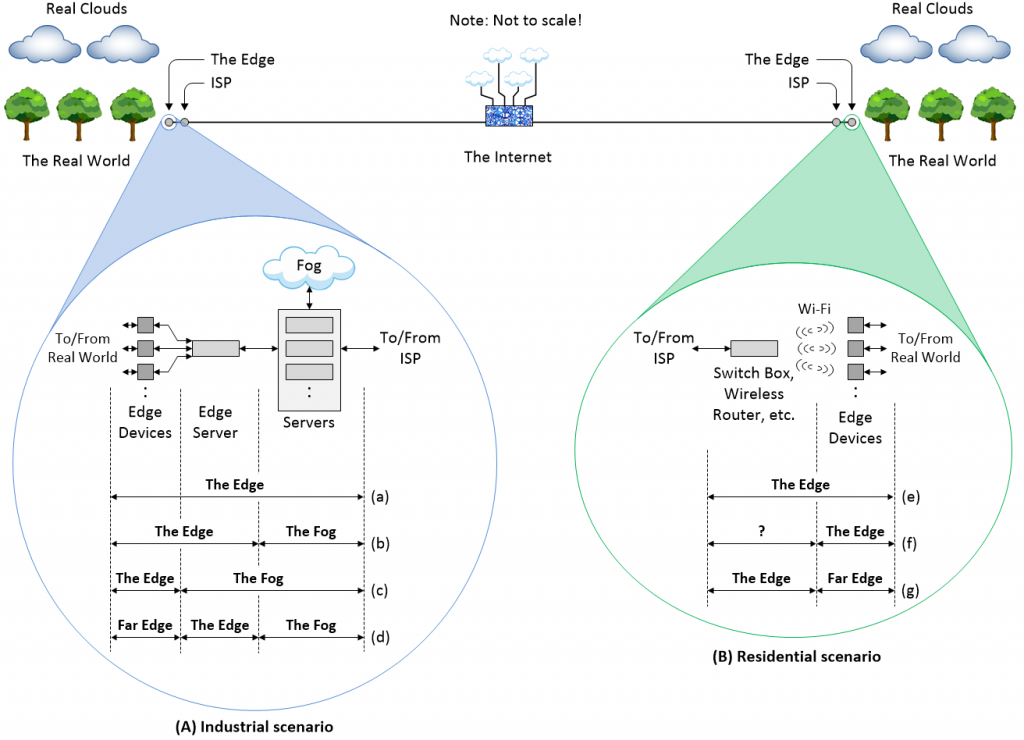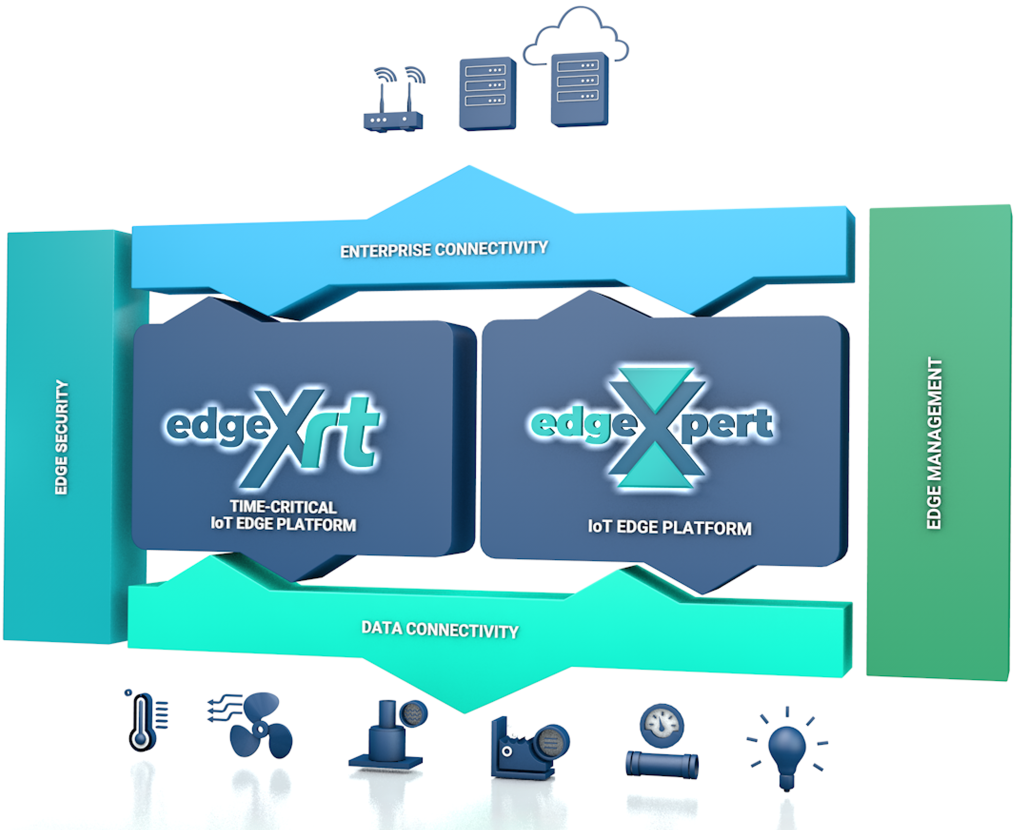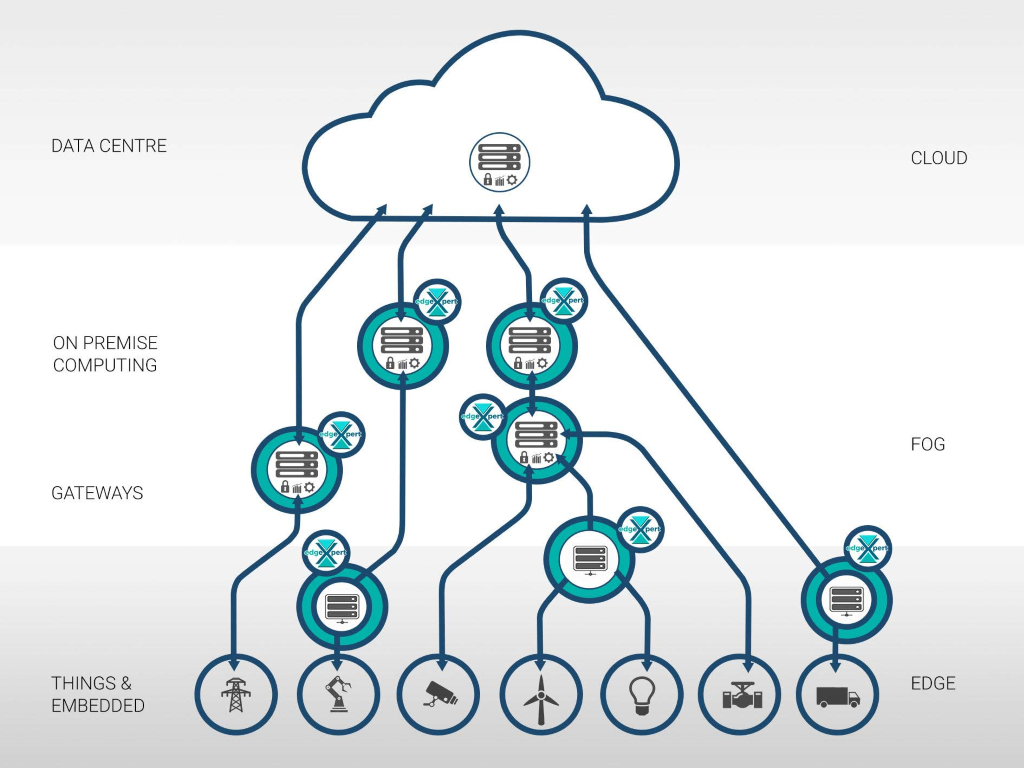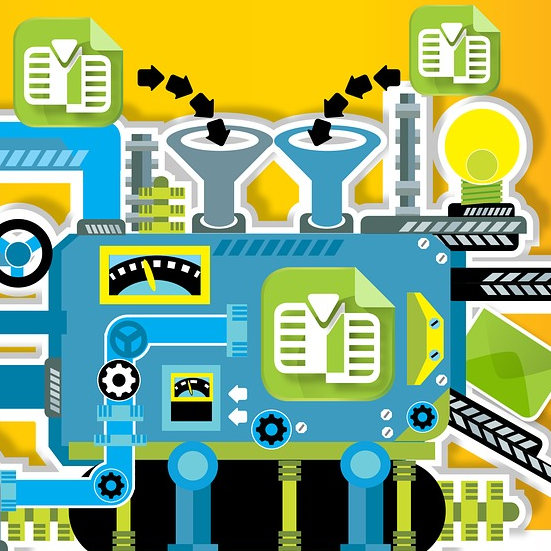I’ve just been talking to the folks from a jolly interesting company called IOTech. One of the things they told me that really struck a chord was that their technology bridges the OT-IT divide. “But what is the OT-IT divide, and why does it need to be bridged?” I hear you cry. Well, I’m glad you asked, because I feel the urge to expound, explicate, and elucidate (don’t worry; I’m a professional).
As an aside, IOTech started in Newcastle upon Tyne, which is a university city on the River Tyne in northeast England (IOTech is now headquartered in Edinburgh, with sales and marketing throughout Europe and America). With its twin city, Gateshead, Newcastle used to be a major shipbuilding and manufacturing hub during the Industrial Revolution; it’s now transmogrified itself into a center of business, arts, and sciences. The reason I mention this here is that I almost went to university in Newcastle — I went up there for the interviews and thought it was a fantastic institution in a gorgeous city — but I ended up getting a better offer from Sheffield Hallam University (that is, Sheffield said they’d accept me. LOL).
As another aside, the term Geordie is both a nickname for a person from the Tyneside area of North East England and the dialect used by its inhabitants. All the Geordies I’ve ever met have had a wonderful sense of humor, and the Geordie dialect has a sing-song quality that’s very pleasing to the ear, but I fear we are in danger of wandering off into the weeds…
Now, this next part isn’t an aside (I know you’re surprised), but rather it is laying a foundation for what is to come. Have you noticed how everybody seems to be talking about the “edge” at the moment? It seems you can barely start to read an IoT-centric article without hearing tell of things like “edge analytics,” “edge computing,” and “edge security.” Another area of confusion is when people talk about the Internet of Things (IoT) and the Industrial IoT (IIoT). What exactly do we mean by these terms, and how do they relate to the “edge”?
The problem is that everyone has different understandings as to what the term “edge” actually means. In fact, we discussed a lot of this in my column What the FAQ is the Edge vs. the Far Edge? As we noted in that column, part of this depends on who you are and your function in the world. If you work for a cloud service provider, for example, then the people who connect to and use your services may live thousands of miles away, so you might regard almost anything outside of your facility, including internet service providers (ISPs), as being the “edge.”
By comparison, if you are an ISP, then you will regard your customers — in the form of homes, stores, factories, etc. — as being the “edge.” Even when you get to a factory, for example, different people will have different views as to what constitutes the edge.

The term “edge” means different things to different people (Image source; Max Maxfield)
At some stage, we may want to talk about the IoT and IIoT devices that are located at the very edge of the internet — the ones containing the sensors and actuators that interface to the real world. In this case, some people use terms like the “far edge” and “extreme edge” as an aid to visualizing the relative location of these devices in the scheme of things (speaking about “visualizing,” I just ran across a useful article that presents the Top Ten Data Visualization Tools & Software).
But wait, there’s more (I can barely believe it myself). The term information technology (IT) refers to the use of computers and networks to store, retrieve, transmit, and manipulate data or information. In the case of an industrial environment like a factory, all of this is overseen by the company’s IT department. I know this is unfair, but I can’t help but visualize these folks as relaxing in a luxurious air-conditioned common room sipping cups of designer coffee while occasionally deigning to field questions from their users by superciliously saying things like, “Are you sure you’ve turned it on? You have? Well, in that case turn it off, then turn it on again, and then call back if it’s still not working!” (No, of course I’m not bitter; why do you ask?)
But what about the heroes working in the trenches — those charged with the monitoring and control of physical devices, such as motors, generators, valves, and pumps? These brave guys and gals are the cream of the operational technology (OT) department.
All of which leads us to the terms “thin” (OT) edge and “thick” (IT) edge. The idea here is that the “thin” edge refers to the domain of the OT group working with automation-centric data, while the “thick” edge refers to the realm of the IT group who want to take that data and run with it, but who cannot access or use it in its raw form. Thus, one of the primary roles of the OT group is to convert the raw data into a form that can be consumed by the IT department. (I’m reminded of the phrase “the thin blue line,” which refers figuratively to the position of police in society as the force that holds back chaos. Similarly, we can think of the OT folks at the “thin” edge as holding back the chaos of the real world while transforming it into something the rest of us can use.)
The problem is that, assuming they deign to talk to each other at all, the OT and IT teams speak different languages. What is required is some way to bridge the divide between these groups, which brings us back to the folks at IOTech whose technology does just that (it’s like déjà vu all over again; hang on, didn’t somebody just say that?).
Let’s start with EdgeX Foundry, which is a vendor-neutral open-source platform hosted by the Linux Foundation that provides a common framework for IIoT edge computing. The goal of the EdgeX Foundry is the simplification and standardization of edge computing architectures applicable in IIoT scenarios.
In this context, the term “South Side” refers to a heterogeneous set of devices, sensors, actuators, and other IoT objects that produce the raw data. Contra wise, the term “North Side” refers to the fog and/or the cloud where the data will eventually be aggregated, stored, and analyzed. The role of the EdgeX Foundry is to take the raw data from the South Side (the domain of the OT group), and treat and process it into a form suitable to be handed over to the North Side (the realm of the IT department).
The term microservices refers to a software development technique — a variant of the service-oriented architecture structural style — that arranges an application as a collection of loosely coupled services. In a microservices architecture, services are fine-grained, and the protocols are lightweight. Thereason I mention this here is that the EdgeX Foundry platform is structured in different layers, each one composed of multiple microservices. This modular architecture allows users to easily scale, update, and distribute the logic into different systems, while also improving maintainability.
Having said all this, companies typically don’t directly deploy open source software for business-critical, safety-critical, or mission-critical applications. Instead, they go to someone that will offer enterprise-level services and support. Consider the relationship between the Linux operating system (OS) and Red Hat, for example. Linux is open source, so companies could theoretically simply load it onto all of their workstations and servers themselves for free. Instead, they prefer to go to a company like Red Hat, which offers enterprise-level service and support. (Founded in 1993, Red Hat was acquired by IBM in 2019).
The way I think of this is that the Arduino is open source, and the folks at Arduino provide all of the hardware and software files I need to build my own boards, but — even so — I still find it quicker, easier, and more reliable to buy fully functional Arduinos from trusted vendors.
Based on this, we might think of IOTech as being the “Red Hat” of the EdgeX Foundry world. In addition to providing commercial support for trusted deployment of the open source baseline EdgeX Foundry platform, IOTech also offers numerous value-add features that are not available in the baseline version, such as the following:
- Service Level Agreement (SLA)
- Technical Support Guarantees
- Rigorous QA Processes
- Simplified Installation and Updates
- Industrial Grade North and Southbound Connectivity
- A Time-Critical Platform
- Management and Deployment at Scale
- Enhanced Security
- Enhanced Usability
- Data Cleaning Operations
- User Interface and Data Visualization Tools
- Training, Pilots, and an Accelerated Roadmap
Let’s start with IOTech’s edgeXpert. On the South Side, edgeXpert provides a wealth of connectors and profiles that can ingest raw data from sensors in any way, shape, or form — anything from the twisted wire electrical specifications and protocols of the 1960s to the packet-based interfaces of today’s most sophisticated sensor devices (the connectors handle the protocols, while the profiles specify “what to expect coming in” and “what to send out”). On the North Side, there are the enterprise level connectors and profiles required to export the processed data into the fog and the cloud.

The IOTech edge platform solution (Image source: IOTech)
In between, the IOTech edge platform solution includes core data services, such as the ability to normalize edge data, aggregate edge data from multiple sensors, and store edge data for subsequent use. There are also services to analyze and process the data, along with services for security and management.
One key point is that edgeXpert boasts a distributable architecture — it’s various microservices can run on a single host of be distributed across a cluster based on resource availability. In some cases, portions of edgeXpert might run on the edge devices themselves, such as smart surveillance cameras, for example. The containerized deployment of microservices supports portability, while distribution of microservices provides scalability and failover support, where failover is a method of protecting computer systems from failure, in which standby equipment automatically takes over when the main system fails.

edgeXpert boasts a distributable architecture (Image source: IOTech)
In the same way that you don’t want the airbag in your car deploying based on a decision that’s made in the cloud, there are some situations in factories when a decision needs to be made and acted on quickly. Thus, edgeXpert can also be used to provide rules-based control functions along the lines of “If this temperature exceeds this value, then turn the machine off” (more sophisticate control systems from other vendors can be integrated into the framework).
The good news is that edgeXpert is ideal for situations that can be addressed with near real-time responsiveness, which equates to around 80% of use cases. The better news is that, for those time-critical systems that require ultra-low latency response times and support for real-time deterministic data processing, the edgeXrt extension to edgeXpert can be brought into play.
I get to talk to a lot of companies that are working on super cool technologies like artificial intelligence (AI) and machine learning (ML). Very often, the folks from these companies drop terms like the AIoT into the conversation. As I noted in my column What the FAQ are the IoT, IIoT, IoHT, and AIoT?:
According to the IoT Agenda, “The Artificial Intelligence of Things (AIoT) is the combination of artificial intelligence (AI) technologies with the Internet of Things (IoT) infrastructure to achieve more efficient IoT operations, improve human-machine interactions, and enhance data management and analytics […] the AIoT is transformational and mutually beneficial for both types of technology as AI adds value to IoT through machine learning capabilities and IoT adds value to AI through connectivity, signaling, and data exchange.”
I couldn’t have said it better myself. I remember many occasions where I’ve been lured, beguiled, and tempted by promises of delight with regard to all the wonderful tasks these AI systems could perform in an industrial setting. For example, I’ve heard tales of how an AI system — running on the edge (whatever that is) or in the fog or in the cloud — can monitor the vibration of a machine using a 3-axis accelerometer, or listen to it using a MEMS microphone, and detect subtle anomalies and patterns and use these to predict timelines for future problems and to automatically schedule preemptive maintenance.
The one thing I don’t recall any of these companies talking about is how they take the noisy (from electrical interference) and dirty (with missing or false values) raw data from myriad diverse sensors and wrangle it into a form that’s suitable for their systems to peruse and ponder. Of course, I’ve now discovered that IOTech provides this — oh so important — piece of the jigsaw, thereby bridging the OT-IT divide.






Isn’t the industry going to drown in its own terminology?
Twas ever thus — if you ever hear engineers talking outside your own discipline, much of it sounds like a different language. When I hear the IT guys talking, for example, I think to myself “This is what I must sound like to my wife” (fortunately, she never listens to a word I say LOL)